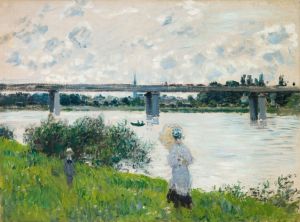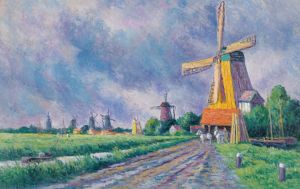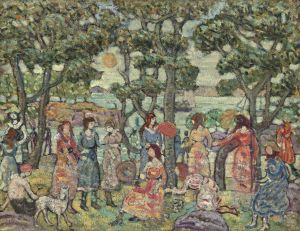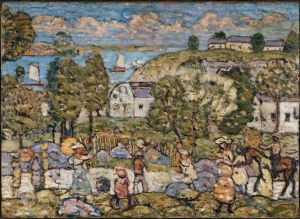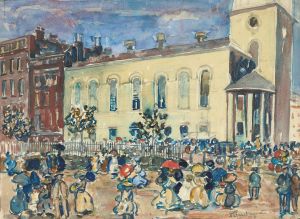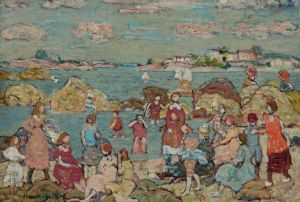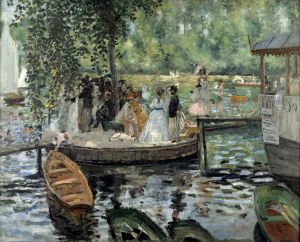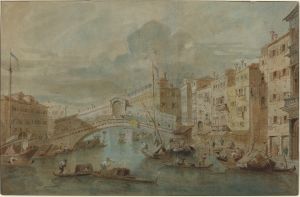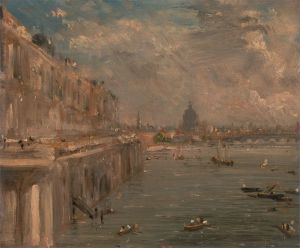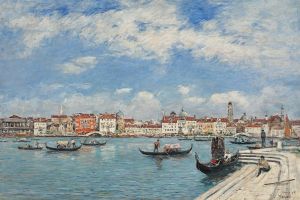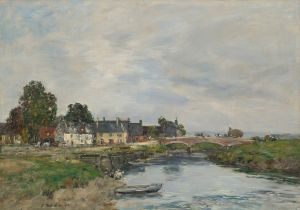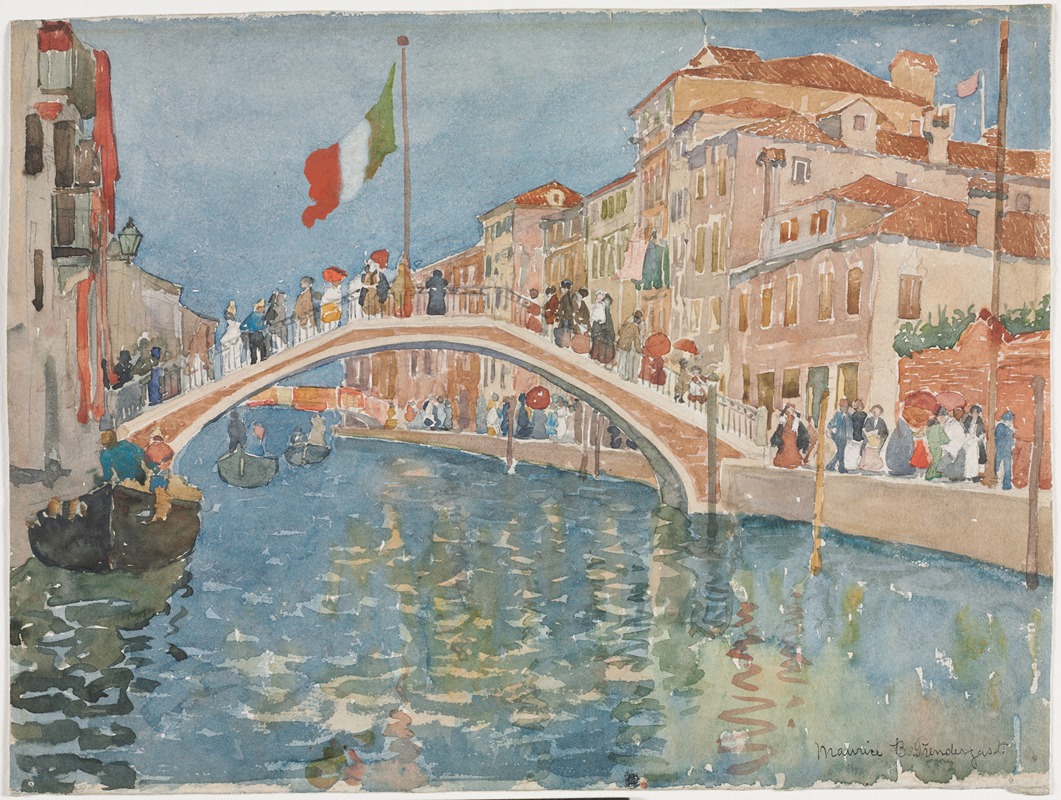
A Bridge In Venice
A hand-painted replica of Maurice Prendergast’s masterpiece A Bridge In Venice, meticulously crafted by professional artists to capture the true essence of the original. Each piece is created with museum-quality canvas and rare mineral pigments, carefully painted by experienced artists with delicate brushstrokes and rich, layered colors to perfectly recreate the texture of the original artwork. Unlike machine-printed reproductions, this hand-painted version brings the painting to life, infused with the artist’s emotions and skill in every stroke. Whether for personal collection or home decoration, it instantly elevates the artistic atmosphere of any space.
Maurice Prendergast was an American Post-Impressionist artist known for his vibrant use of color and distinct style, which often depicted lively scenes of leisure and urban life. One of his notable works is "A Bridge in Venice," which captures the essence of Venice through Prendergast's unique artistic lens.
"A Bridge in Venice" is a watercolor painting that exemplifies Prendergast's fascination with the interplay of color and form. The painting is part of his series of works created during his travels to Europe, particularly Italy, in the early 20th century. Prendergast visited Venice in 1898 and again in 1911, and these trips greatly influenced his artistic development. The city's picturesque canals, bridges, and vibrant atmosphere provided rich subject matter for his work.
In "A Bridge in Venice," Prendergast employs his signature style characterized by a mosaic-like arrangement of color and shape. The painting features a bustling scene with figures crossing a bridge, set against the backdrop of Venice's iconic architecture. The use of watercolor allows for a fluidity and transparency that captures the shimmering light and reflections on the water, a hallmark of Venetian scenery.
Prendergast's technique involves the use of broad, flat areas of color, often outlined with bold lines, which create a sense of rhythm and movement within the composition. This approach reflects the influence of both Post-Impressionism and the decorative qualities of the Art Nouveau movement. His work is often compared to that of the French artist Paul Cézanne, although Prendergast's palette is typically more vibrant and his compositions more densely packed with detail.
The painting is notable for its lack of a central focal point, instead offering a panoramic view that invites the viewer to explore the entire scene. This compositional choice reflects Prendergast's interest in capturing the dynamic and transient nature of urban life. The figures in the painting are stylized and somewhat abstract, a technique that emphasizes the overall harmony of the composition rather than individual details.
Prendergast's work, including "A Bridge in Venice," was instrumental in the development of modern art in America. He was a member of The Eight, a group of artists who challenged the academic standards of the time and paved the way for more progressive artistic movements. His paintings were exhibited in several influential exhibitions, including the Armory Show of 1913, which introduced American audiences to European avant-garde art.
Today, "A Bridge in Venice" is appreciated for its innovative use of color and form, as well as its ability to convey the vibrancy and charm of Venice. Prendergast's work continues to be celebrated for its contribution to American art and its role in bridging the gap between traditional and modern artistic styles. His paintings can be found in major art museums and collections, where they continue to inspire and captivate audiences with their unique blend of color, movement, and urban life.





